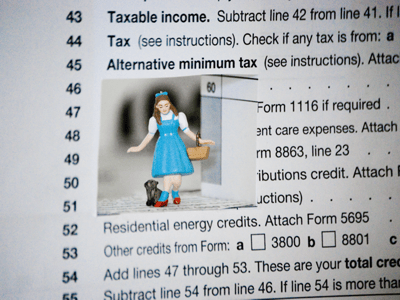
I have read many of the articles on your website. Very informative, particularly the libertarian viewpoints, many with which I would agree. My question concerns a seeming discrepancy, or possibly I am missing or mis-interpreting something. In the article “Choosing the Appropriate Investment Vehicle – Part 3“, Capital Gains section, you write “So mutual funds that have a high capital gains exposure should be purchased in retirement accounts, not taxable accounts.”
In the article “Tax-Efficient Portfolio Management” the table indicates that “Investments with expected capital gains” should be invested in “Taxable Accounts”.
Is the seeming discrepancy explained by high capital gains exposure vs expected capital gains?
This distinction is important to me as I am attempting to consolidate and allocate about $500,000 into Roth IRA, traditional IRA, and taxable accounts.
Thanks for the clarification.
Consolidating
Yes, the distinction is between existing high capital gains exposure in a mutual fund verses future capital gains you expose yourself to.
High capital gains exposure in a mutual fund
Every mutual fund is sitting on unrealized capital gains or losses. The amount is called their capital gains exposure. This happens because before you purchase the fund, the fund manager purchased the stocks they are currently holding. If the fund’s exposure is 20%, you might purchase the mutual fund on Tuesday, the Manager might sell the appreciated positions on Wednesday and could distribute a capital gains distribution to shareholder on Thursday. You would have to pay capital gains on the fund’s existing positions even though the mutual fund share prices has not moved and you have not made any profit.
Exposing yourself to an extra 15% tax on a position of 20% gain means you lose 3% (15% x 20%) of your after tax profit for 2012 and 4% (20% x 20%) when the capital gains tax rises to 20% in 2013.
If a mutual fund has a high capital gains exposure, you should avoid buying it in a taxable account in order to avoid exposing yourself to capital gains you did not gain from.
Another way to avoid this extra tax is to purchase an exchange traded fund (ETF). An ETF does not have a capital gains exposure and you do not experience any capital gains until you sell your position.
Future capital gains you expose yourself to
If you are purchasing an ETF or an individual stock (or even a mutual fund without a large capital gains exposure) you benefit from making that purchase in a taxable account rather than a traditional IRA.
Any capital gains in a taxable account are taxed at 15% in 2012 rising to 20% in 2013. Any gains in a traditional IRA are tax deferred. The tax is deferred, but not zero. When you do withdraw the money you will be taxed at ordinary income tax rates. If your taxable income is in the 15% tax bracket ($70,700 in 2012 for Married Filing Jointly) you won’t have to pay more in tax. But above that amount and you are pushed into the 25% tax bracket for 2012 rising to the 28% tax bracket in 2013.
Given a choice, if your taxable income puts you above the 15% tax bracket it is better to have appreciating assets in your taxable account and interest paying assets in your traditional IRA.
Putting the right investments in the right investment vehicles is an important part of tax planning.
Photo by Megan Marotta